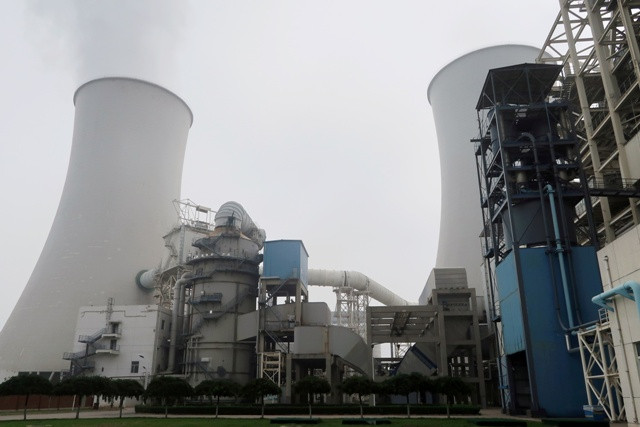

(Photo: REUTERS/Shivani Singh)
China is claiming significant success in its long fight to reduce pollution and mitigate global climate change, and is even ahead of its own timetable for doing so.
A study published recently in the monthly peer-reviewed scientific journal, Nature Energy, reveals China's coal-fired power plants met its own ultra-low emission (ULE) standards ahead of schedule. It also disclosed China attained substantial emission reductions between 2014 and 2017. Coal remains the most widely used fuel in China despite efforts to move away from its use.
The study, "Substantial emission reductions from Chinese power plants after the introduction of ultra-low emission standards" was a collaboration between scientists from the Academy of Mathematics and Systems Science (AMSS) of the Chinese Academy of Sciences (CAS) and other Chinese institutions.
China introduced its ambitious ULE standards for renovating coal-fired power generating units in September 2014. The new and stringent ULE standards for coal-fired power plants mandates that 580 million kW of existing installed capacity, or 71% of the total in 2014, meet ULE standards by 2020.
The study found that 591 million kW of pre-existing coal-fired capacity had already been renovated to meet ULE standards by 2017, a total that was 11 million kW beyond the original goal.
The accelerated pace of ULE enforcement means China's annual power plant emissions of sulphur dioxide (SO2), nitrogen oxide (NO) and particulate matter (PM) have all fallen. SO2 was reduced by 65%, NO by 60% and PM by 72% from 2.21, 3.11 and 0.52 million tons in 2014 to 0.77, 1.26 and 0.14 million tons in 2017, respectively.
Actual monitoring data revealed that emissions were 18% to 92% below recent estimates. This study said this method contrasts with most existing research that relies on ex-ante (based on forecasts) studies to estimate how ULE standards affect power emissions based on assumptions about changes in emission concentrations.
"The ULE standards, as an example of China's effective environmental regulation policies, provide insights and implications for reducing power emissions worldwide," according to Prof. Wang Shouyang of CAS. "Additionally, these emission reductions can lead to an improvement in air quality and considerable health benefits."
China achieved its emission goals ahead of schedule due to the country's strict emission supervision system, effective economic incentive mechanisms, and the nationwide application and upgrading of ULE technology, said Prof. Tang Ling of the Beijing University of Chemical Technology and Beihang University. (BUSINESS TIMES)

86-10-68597521 (day)
86-10-68597289 (night)

52 Sanlihe Rd., Xicheng District,
Beijing, China (100864)

